The term CUMA (Coopérative d’Utilisation de Matériel Agricole), loosely translates to “co-operative for the use of farm implements”. While the French machinery sharing solution has been around for almost 90 years, the concept never really officially made its way to Ireland until 2021. Inspired by the French model, Ireland’s first farm machinery sharing co-operative was formed by members of Kilnamartyra dairy discussion group in west Cork, when they bought a slurry tanker and trailing shoe.
Curious to find out more about the CUMA system in France, we visited CUMA d’Homare, a small CUMA group in the northwestern Normandy region while on our travels to get a better insight into the concept.
CUMA groups range in size from four members right the way up to 110 shareholders, but there is no ceiling on member numbers. Like all co-operatives, CUMAs are groups of farmers who have come together to satisfy their common needs. The objective behind CUMA is to provide members with an organisation which they can hire agricultural machines and equipment from, while also offering a social element.
Machinery is a fixed cost on a farm business, and has a significant impact on net profit. By becoming part of a CUMA, individual farmers can lower their capital investment, increase efficiency, and reduce production costs.
CUMA
In the 1930s in France, many informal agricultural sharing systems existed. However, it was after the second World War when CUMA was officially established. It was born to help the modernisation of agriculture in France at a time when many of the farms in the country were small family farms.
Today, there are 11,510 CUMA groups throughout France. On average, there are 23 members in each group. One in two French farmers are involved in a CUMA group, which equates to 199,000 members. The CUMA structure is made up of 65 local federations, 10 regional federations and one national federation.
CUMA’s national fleet is made up of 260,000 pieces of machinery. In 2020, CUMA as a whole in France invested €497m in machinery and paid the salaries of 4,800 staff. The average turnover of each CUMA group is €62,500 annually, while the average investment per CUMA is €80,000 each year.
As of 2019 France’s CUMA groups accounted for 7,200 tractors, 15,800 muck spreaders and slurry tankers, 13,770 seed drills, 7,260 cultivators, 6,845 sprayers, 3,890 mechanical weeders, 5,760 round balers, 2,360 combines and 1,710 forage harvesters.
How does it work?
CUMAs are incorporated associations of at least four members (farmers). The organisation of CUMA means that it is considered an autonomous entity under the law. It also means the liability of the members is limited to the amount invested in the association. The CUMA is the sole proprietor of all equipment and machinery and functions. The co-operative has internal rules and legally binding contracts which clearly spell out the rights and obligations of both the CUMA and its members. CUMAs are structured to allow the sharing of individual machines among subsets of members.
Varying scale
Depending on the desire within the area and its members, some CUMA groups want to stay as small, tight-knit groups, while more want to grow and expand into much larger groups. It is possible for farmers to be involved in several CUMA groups. However, the association strictly forbids any competition between CUMAs.
We visited one CUMA group in Normandy. This was a group of 20 mixed livestock and tillage farmers who live within a 15km radius. The group was set up in 1994. From the outside looking in, the structure of this CUMA came across as being a little on the lax side, but the French said it was based on trust, and worked very well. The group’s fleet of machines were stored across a number of farms, primarily on the farm of whichever farmer used it the most.
The group owns 20 machines, such as a mower, baler, wrapper, a plough, cultivators, a seeder, dung spreaders and slurry tankers. This year, it added a new Fendt 720 Vario and a new McHale V6 750 variable chamber baler.
The group had no particular rules on booking machines, it was based on a first-come, first-serve basis, with the farmer who wanted the machine ringing the person who was looking after that particular implement two to three days before they needed it. The machines were only able to be held by each farmer for one day if they were in high demand.
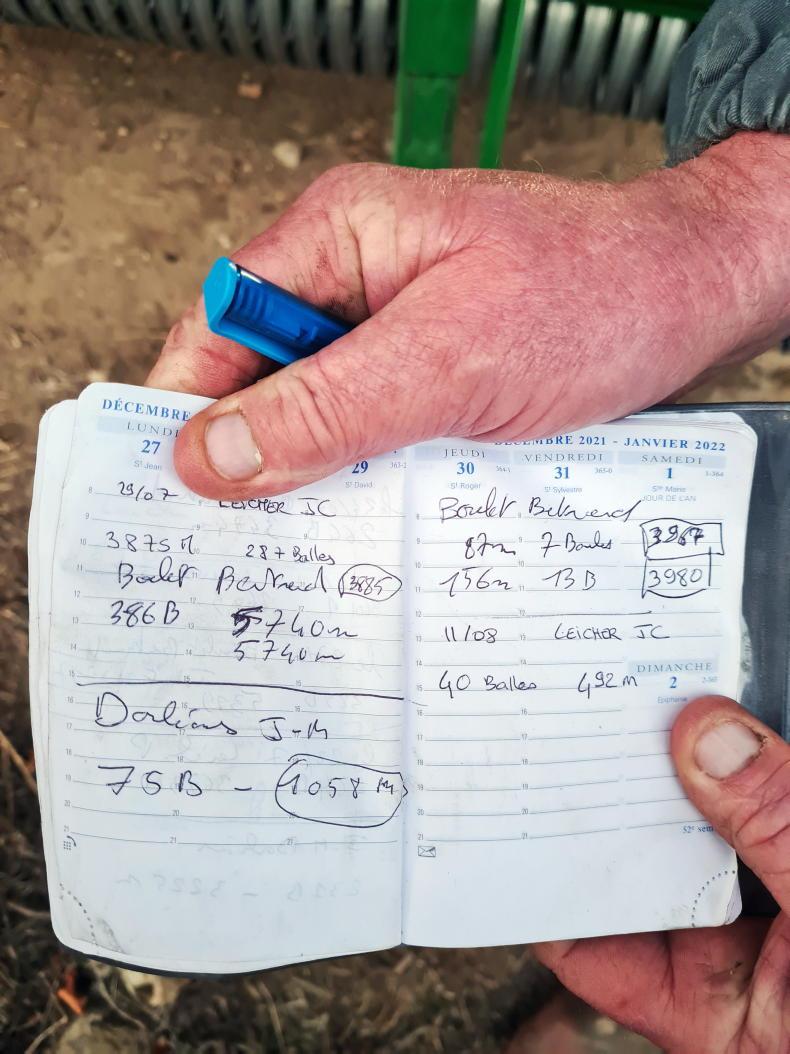
With the small CUMA we visited in Normandy, each machine has its own little notepad, where the work in hours, bales or distance etc is recorded.
Each machine has its own little notepad, where the work in hours, bales or distance etc is recorded. Everyone pays their due diligence then at the end of the year. A device built into the wheel hub called a hubometer measures the distance travelled by the trailed implement as the wheel rotates.
As with any co-op, the group is required to have a chair, vice-chair, a treasurer and a secretary – all on a voluntary basis with expenses paid. The entire CUMA group meets every January for a general meeting, looking at how the year went and whether or not they were going to upgrade any existing machinery, or add to the fleet. A minimum of one meeting each year is a requirement from the CUMA head office.

A device built into the wheel hub called a hubometer measures the distance travelled by the trailed implement as the wheel rotates.
When a group decides to buy a new machine, they put up 20% of its value into CUMA share capital in proportion to the usage they each commit to get out of it. The co-op then takes out a bank loan for the remaining 80% and purchases the machine in its own name.
The CUMA head office also agrees some long-term hire deals which are offered to its member groups. For example, the group we visited had a new Bobcat telehandler on farm. With a requirement to clock a minimum of 1,000 hours/year, the telehandler is offered to members within the group at a rate of €12/hour. As soon as it hits 2,000 hours, it’s replaced with a new machine. This is through a tender put out by CUMA to telehandler manufacturers. The firm has over 100 of these machines hired to its members around France. 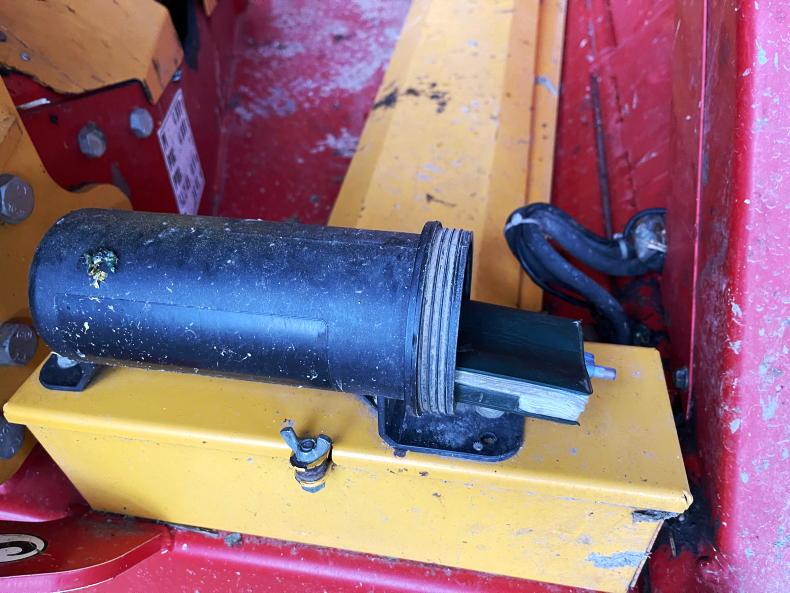
Each machine has a little storage compartment to hold the notepad.
Larger groups
Due to the scale of the larger CUMA groups, they have to be much more organised and run a lot tighter. Most of these use an app such as MyCuma Planning to book machines. This is basically a calendar where farmers log the machine they need and when. Meanwhile, some of the big CUMAs who have a full-time employee will call that person or the farmer in the group responsible for the particular machine they need.
Many large CUMA groups have purchased a plot of land central to its members on which storage sheds and workshops are built. The larger CUMAs go one step further, and take on their own employees, whether that be admin, drivers or mechanics, or all three.
Every year, each individual CUMA works out a rental fee for each machine to cover its depreciation, loan repayments and maintenance. Time-sensitive machines such as harvest equipment are generally paid for after use, while machines that are used throughout the year are often paid for on a monthly basis. Depending on the group’s structure, the invoices are often issued by people who work full-time in one of the local CUMA offices, which are known as Fédérations. When the machine is eventually sold, the members who invested in it get their share capital back.

One in two French farmers are involved in a CUMA group, which numbers wise equates to 199,000 members.
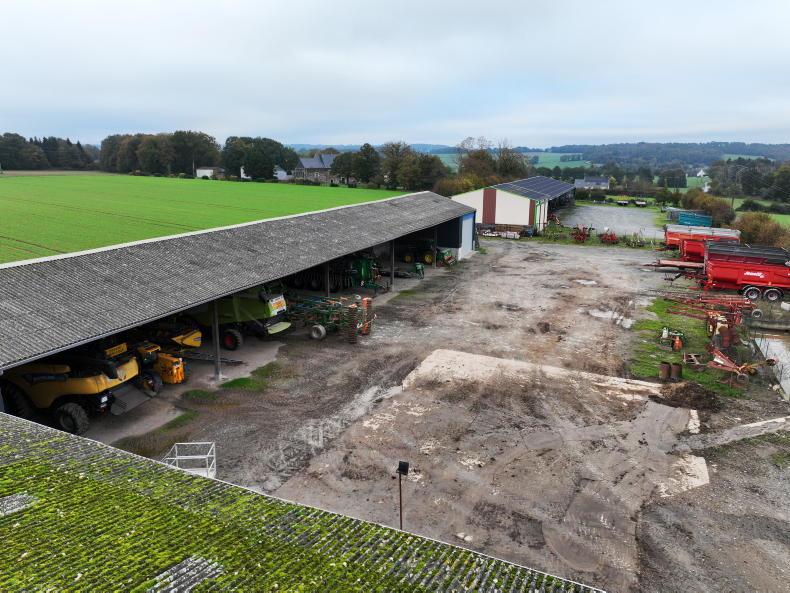
Every year, each individual CUMA works out a rental fee for each machine to cover its depreciation, loan repayments and maintenance.
How does a new farmer join a CUMA group?
The farmer is required to contact the chair of the group they wish to join, and must put forward a request to join. In the case of the group we visited, they would meet and vote whether or not the farmer will be allowed join. It’s a majority vote rules. The decision will also depend on what machines the new farmer wants to use, and whether or not there is any spare capacity with this equipment.
If accepted, the new member will have to put up share capital for each machine they want to use. Just because a new member is accepted, it doesn’t mean they will have access to all machines within that particular CUMA group. If a farmer leaves a CUMA, they will be entitled to get this share capital back.
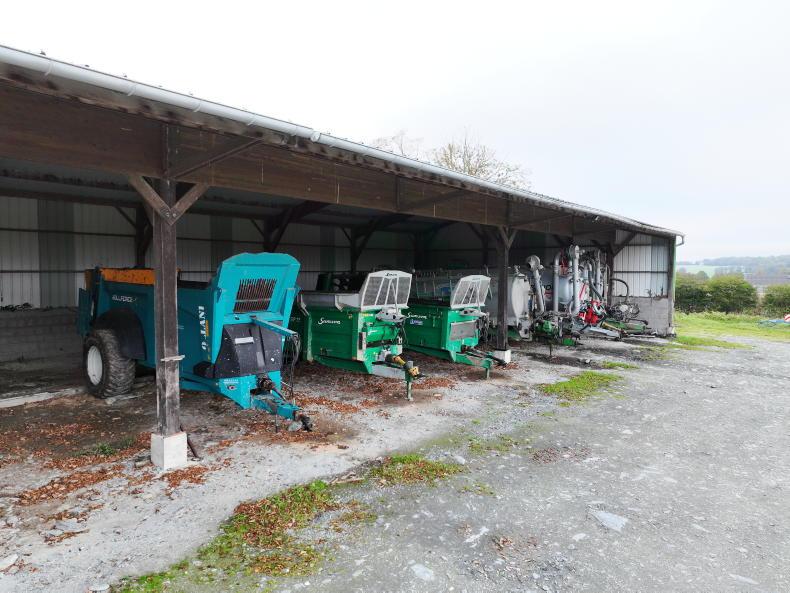
Today, there are 11,510 CUMA groups throughout France.
What happens when someone breaks a machine?
If a machine breaks because of driver error, the farmer is required to fix it. If it breaks due to wear and tear, the CUMA group will foot the bill. Generally, the group will have factored a maintenance and depreciation figure into the initial machine hire cost, which covers these kinds of situations. Obviously, each group also has its own specific insurance policy.
Members of the CUMA group which we visited explained that they try to carry out as much maintenance and repair work internally a possible, in a bid to keep costs down for everyone. If they can’t fix it, they’ll call the dealer.
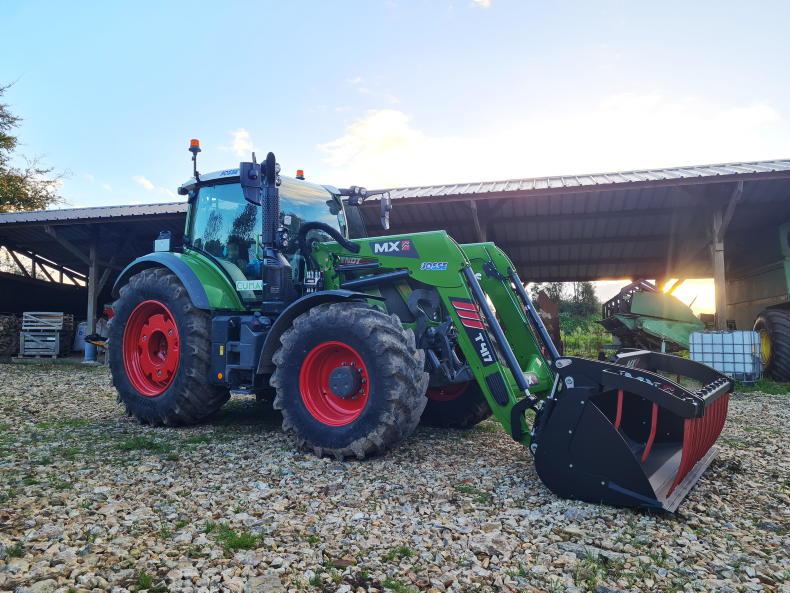
This year, the small CUMA group we visited added a new Fendt 720 Vario and a new McHale V6 750 variable chamber baler.
Machinery sharing in Ireland
Many neighbouring farmers and relatives often share small amounts of machinery in Ireland, but rarely has there been any official documentation signed.
In early 2021, four west Cork dairy farmers officially set up a machinery co-op of their own to share a slurry tanker and trailing shoe. This was the first of its kind in Ireland, and was based on the CUMA model.
In the autumn of 2022, Teagasc launched its own machinery sharing agreement, aimed at tillage farmers. According to Teagasc, the average tillage farm machinery cost is €343/ha (not including labour), with some up to €500/ha, meaning it’s the largest single cost on tillage farms.
They said that 14% of farms had higher costs than standard contractor charges, meaning they would have been better off hiring in a contractor.
This was a significant driver behind this initiative, which attempts to guide or formalise existing and new machine sharing arrangements. It is based largely on the CUMA system and machinery rings in Scotland, to enable farmers to come together to help spread the cost of specific items of machinery.
Teagasc has developed a template to give guidance on purchasing details and ownership, finance, depreciation, facilitation, booking procedure, storage, maintenance and repairs and finally, tax and insurance.
It can be legally binding and drafted by a solicitor, or can be used as just a guideline.
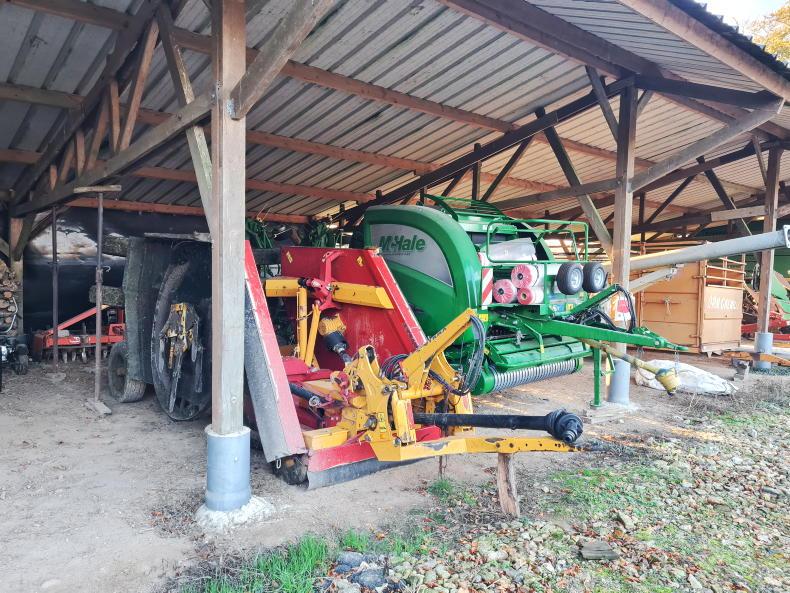
CUMA’s national fleet of machinery is today made up of 254,000 pieces of machinery.
CUMA works very well in France, but the big question is could it work as well in Ireland? We feel it would have a place, but to a much more limited extent.
Why? Well, for several reasons. For a start, our climate. Our higher annual rainfall often means that large amounts of work need to be carried out in limited weather windows. This, along with a serious passion and sense of pride by many Irish farmers and contractors for their machinery, mean certain machines would struggle to work in certain shared scenarios.
Secondly, Ireland has a far greater concentration of agricultural contractors, which are seriously geared to get through work. And thirdly, believe it or not, machinery is relatively cheap in Ireland compared with continental Europe. Why? Well, we have a massive range of high-end manufacturing companies here, while in addition, often dealer margin is 10% lower in Ireland than in mainland Europe.
On the flip side, as machinery gets more and more expensive, we could see potential for Teagasc’s machinery sharing proposals to materialise, particularly on tillage farms.
Looking to the future, it’s evident that more and more contractors are currently getting out of the business. Perhaps there will be certain areas where like-minded farmers will enter similar partnerships, particularly for non-time sensitive equipment.
11,510 CUMA groups. 199,000 CUMA members. One out of two farmers are in Cuma. 23 members on average per Cuma. 4,800 employees working in Cuma. 1,615 Cuma groups employ staff. €497m total CUMA turnover (2020). €62,500 average turnover per Cuma.€452m of total investment. €80,000 of investment per Cuma. 254,000 total farm implements in CUMA. 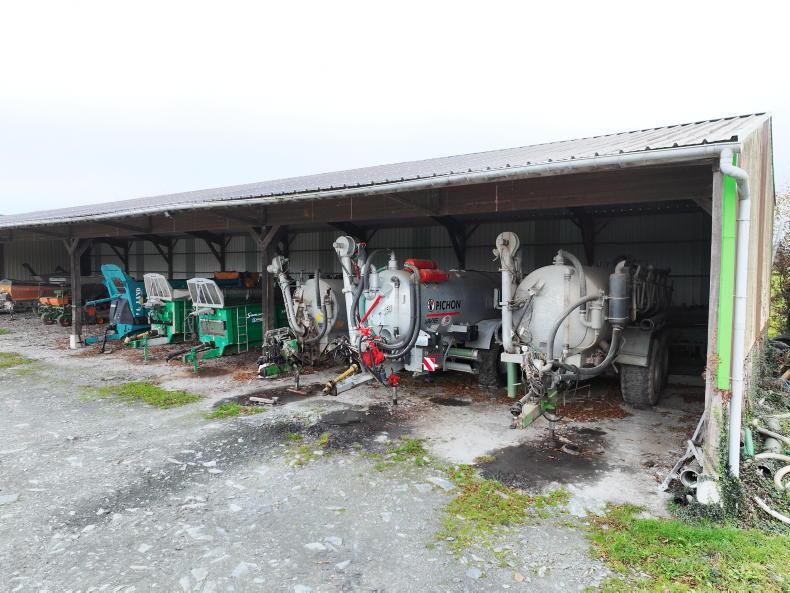
CUMA groups range in size from five members right the way up to 110 shareholders, but there is no ceiling on member numbers.

Many large CUMA groups have purchased a plot of land central to its members on which storage sheds and workshops are built.

The CUMA head office have some long-term hire deals such as this Bobcat telehandler which has a requirement to clock a minimum of 1,000 hours/year, at a rate of €12/hour.
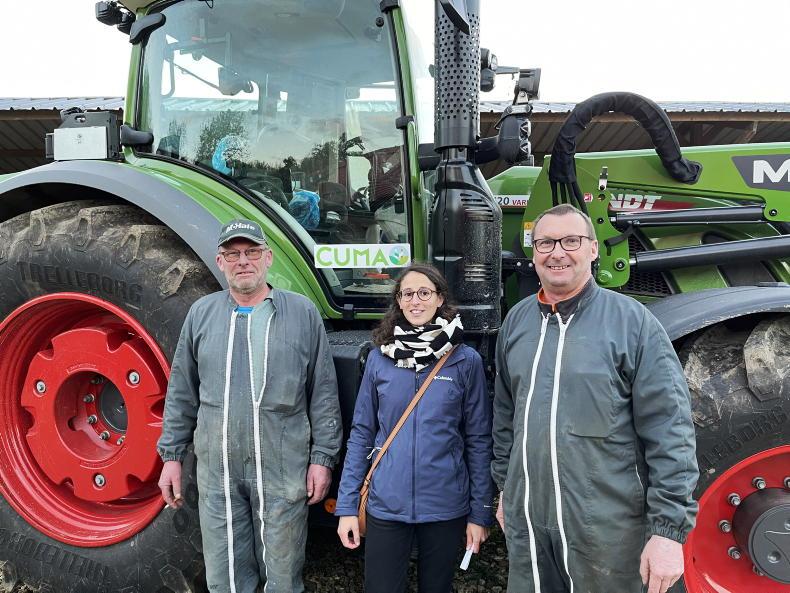
Pictured L/R-
Patrick Leicher, President local CUMA, Noëllie Mailard, CUMA Normandy and Boulet Bertarand, Treasurer of the local CUMA.
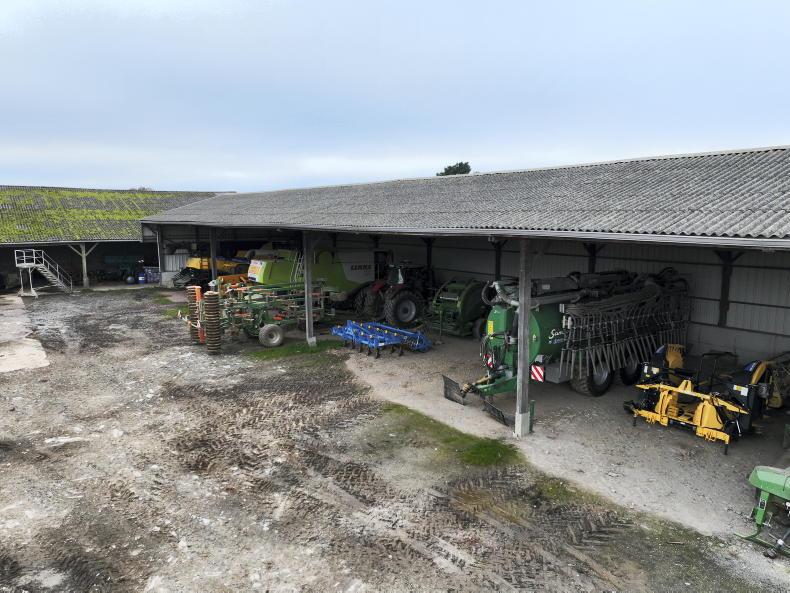
If a machine breaks and its driver error- the farmer is required to fix it. If it breaks due to wear and tear, the CUMA group will foot the bill.
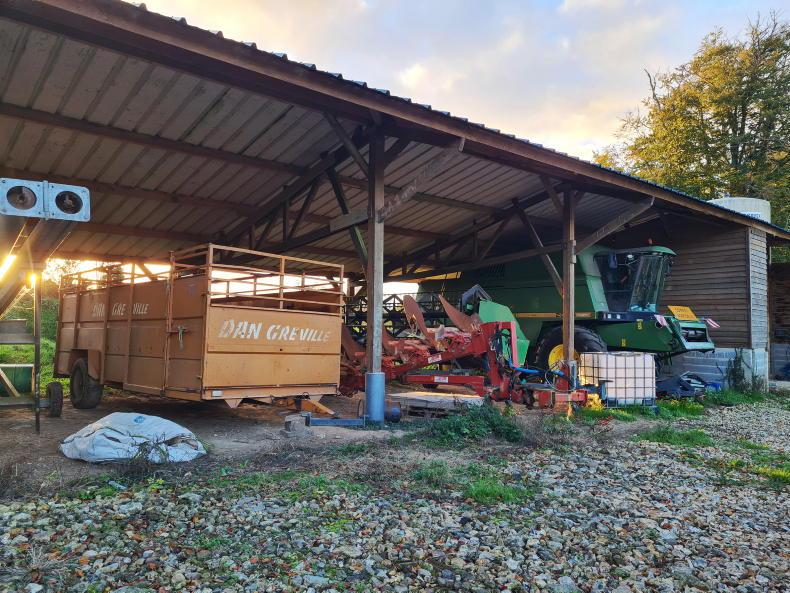
Members of the CUMA group which we visited explained that they try to carry out as much maintenance and repair work internally a possible, in a bid to keep costs down for everyone.
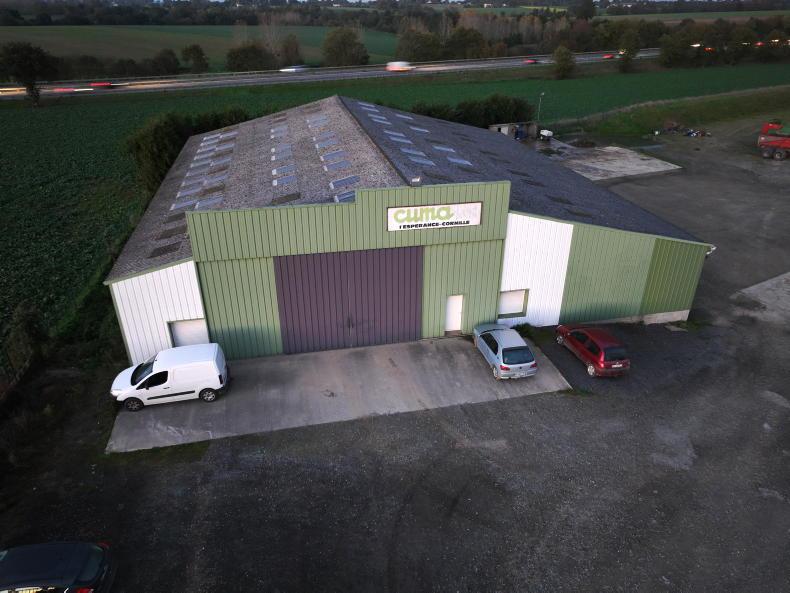
The larger CUMA’s have their own employees, whether that be admin, drivers or mechanics, or all three.
The term CUMA (Coopérative d’Utilisation de Matériel Agricole), loosely translates to “co-operative for the use of farm implements”. While the French machinery sharing solution has been around for almost 90 years, the concept never really officially made its way to Ireland until 2021. Inspired by the French model, Ireland’s first farm machinery sharing co-operative was formed by members of Kilnamartyra dairy discussion group in west Cork, when they bought a slurry tanker and trailing shoe.
Curious to find out more about the CUMA system in France, we visited CUMA d’Homare, a small CUMA group in the northwestern Normandy region while on our travels to get a better insight into the concept.
CUMA groups range in size from four members right the way up to 110 shareholders, but there is no ceiling on member numbers. Like all co-operatives, CUMAs are groups of farmers who have come together to satisfy their common needs. The objective behind CUMA is to provide members with an organisation which they can hire agricultural machines and equipment from, while also offering a social element.
Machinery is a fixed cost on a farm business, and has a significant impact on net profit. By becoming part of a CUMA, individual farmers can lower their capital investment, increase efficiency, and reduce production costs.
CUMA
In the 1930s in France, many informal agricultural sharing systems existed. However, it was after the second World War when CUMA was officially established. It was born to help the modernisation of agriculture in France at a time when many of the farms in the country were small family farms.
Today, there are 11,510 CUMA groups throughout France. On average, there are 23 members in each group. One in two French farmers are involved in a CUMA group, which equates to 199,000 members. The CUMA structure is made up of 65 local federations, 10 regional federations and one national federation.
CUMA’s national fleet is made up of 260,000 pieces of machinery. In 2020, CUMA as a whole in France invested €497m in machinery and paid the salaries of 4,800 staff. The average turnover of each CUMA group is €62,500 annually, while the average investment per CUMA is €80,000 each year.
As of 2019 France’s CUMA groups accounted for 7,200 tractors, 15,800 muck spreaders and slurry tankers, 13,770 seed drills, 7,260 cultivators, 6,845 sprayers, 3,890 mechanical weeders, 5,760 round balers, 2,360 combines and 1,710 forage harvesters.
How does it work?
CUMAs are incorporated associations of at least four members (farmers). The organisation of CUMA means that it is considered an autonomous entity under the law. It also means the liability of the members is limited to the amount invested in the association. The CUMA is the sole proprietor of all equipment and machinery and functions. The co-operative has internal rules and legally binding contracts which clearly spell out the rights and obligations of both the CUMA and its members. CUMAs are structured to allow the sharing of individual machines among subsets of members.
Varying scale
Depending on the desire within the area and its members, some CUMA groups want to stay as small, tight-knit groups, while more want to grow and expand into much larger groups. It is possible for farmers to be involved in several CUMA groups. However, the association strictly forbids any competition between CUMAs.
We visited one CUMA group in Normandy. This was a group of 20 mixed livestock and tillage farmers who live within a 15km radius. The group was set up in 1994. From the outside looking in, the structure of this CUMA came across as being a little on the lax side, but the French said it was based on trust, and worked very well. The group’s fleet of machines were stored across a number of farms, primarily on the farm of whichever farmer used it the most.
The group owns 20 machines, such as a mower, baler, wrapper, a plough, cultivators, a seeder, dung spreaders and slurry tankers. This year, it added a new Fendt 720 Vario and a new McHale V6 750 variable chamber baler.
The group had no particular rules on booking machines, it was based on a first-come, first-serve basis, with the farmer who wanted the machine ringing the person who was looking after that particular implement two to three days before they needed it. The machines were only able to be held by each farmer for one day if they were in high demand.

With the small CUMA we visited in Normandy, each machine has its own little notepad, where the work in hours, bales or distance etc is recorded.
Each machine has its own little notepad, where the work in hours, bales or distance etc is recorded. Everyone pays their due diligence then at the end of the year. A device built into the wheel hub called a hubometer measures the distance travelled by the trailed implement as the wheel rotates.
As with any co-op, the group is required to have a chair, vice-chair, a treasurer and a secretary – all on a voluntary basis with expenses paid. The entire CUMA group meets every January for a general meeting, looking at how the year went and whether or not they were going to upgrade any existing machinery, or add to the fleet. A minimum of one meeting each year is a requirement from the CUMA head office.

A device built into the wheel hub called a hubometer measures the distance travelled by the trailed implement as the wheel rotates.
When a group decides to buy a new machine, they put up 20% of its value into CUMA share capital in proportion to the usage they each commit to get out of it. The co-op then takes out a bank loan for the remaining 80% and purchases the machine in its own name.
The CUMA head office also agrees some long-term hire deals which are offered to its member groups. For example, the group we visited had a new Bobcat telehandler on farm. With a requirement to clock a minimum of 1,000 hours/year, the telehandler is offered to members within the group at a rate of €12/hour. As soon as it hits 2,000 hours, it’s replaced with a new machine. This is through a tender put out by CUMA to telehandler manufacturers. The firm has over 100 of these machines hired to its members around France. 
Each machine has a little storage compartment to hold the notepad.
Larger groups
Due to the scale of the larger CUMA groups, they have to be much more organised and run a lot tighter. Most of these use an app such as MyCuma Planning to book machines. This is basically a calendar where farmers log the machine they need and when. Meanwhile, some of the big CUMAs who have a full-time employee will call that person or the farmer in the group responsible for the particular machine they need.
Many large CUMA groups have purchased a plot of land central to its members on which storage sheds and workshops are built. The larger CUMAs go one step further, and take on their own employees, whether that be admin, drivers or mechanics, or all three.
Every year, each individual CUMA works out a rental fee for each machine to cover its depreciation, loan repayments and maintenance. Time-sensitive machines such as harvest equipment are generally paid for after use, while machines that are used throughout the year are often paid for on a monthly basis. Depending on the group’s structure, the invoices are often issued by people who work full-time in one of the local CUMA offices, which are known as Fédérations. When the machine is eventually sold, the members who invested in it get their share capital back.

One in two French farmers are involved in a CUMA group, which numbers wise equates to 199,000 members.

Every year, each individual CUMA works out a rental fee for each machine to cover its depreciation, loan repayments and maintenance.
How does a new farmer join a CUMA group?
The farmer is required to contact the chair of the group they wish to join, and must put forward a request to join. In the case of the group we visited, they would meet and vote whether or not the farmer will be allowed join. It’s a majority vote rules. The decision will also depend on what machines the new farmer wants to use, and whether or not there is any spare capacity with this equipment.
If accepted, the new member will have to put up share capital for each machine they want to use. Just because a new member is accepted, it doesn’t mean they will have access to all machines within that particular CUMA group. If a farmer leaves a CUMA, they will be entitled to get this share capital back.

Today, there are 11,510 CUMA groups throughout France.
What happens when someone breaks a machine?
If a machine breaks because of driver error, the farmer is required to fix it. If it breaks due to wear and tear, the CUMA group will foot the bill. Generally, the group will have factored a maintenance and depreciation figure into the initial machine hire cost, which covers these kinds of situations. Obviously, each group also has its own specific insurance policy.
Members of the CUMA group which we visited explained that they try to carry out as much maintenance and repair work internally a possible, in a bid to keep costs down for everyone. If they can’t fix it, they’ll call the dealer.

This year, the small CUMA group we visited added a new Fendt 720 Vario and a new McHale V6 750 variable chamber baler.
Machinery sharing in Ireland
Many neighbouring farmers and relatives often share small amounts of machinery in Ireland, but rarely has there been any official documentation signed.
In early 2021, four west Cork dairy farmers officially set up a machinery co-op of their own to share a slurry tanker and trailing shoe. This was the first of its kind in Ireland, and was based on the CUMA model.
In the autumn of 2022, Teagasc launched its own machinery sharing agreement, aimed at tillage farmers. According to Teagasc, the average tillage farm machinery cost is €343/ha (not including labour), with some up to €500/ha, meaning it’s the largest single cost on tillage farms.
They said that 14% of farms had higher costs than standard contractor charges, meaning they would have been better off hiring in a contractor.
This was a significant driver behind this initiative, which attempts to guide or formalise existing and new machine sharing arrangements. It is based largely on the CUMA system and machinery rings in Scotland, to enable farmers to come together to help spread the cost of specific items of machinery.
Teagasc has developed a template to give guidance on purchasing details and ownership, finance, depreciation, facilitation, booking procedure, storage, maintenance and repairs and finally, tax and insurance.
It can be legally binding and drafted by a solicitor, or can be used as just a guideline.

CUMA’s national fleet of machinery is today made up of 254,000 pieces of machinery.
CUMA works very well in France, but the big question is could it work as well in Ireland? We feel it would have a place, but to a much more limited extent.
Why? Well, for several reasons. For a start, our climate. Our higher annual rainfall often means that large amounts of work need to be carried out in limited weather windows. This, along with a serious passion and sense of pride by many Irish farmers and contractors for their machinery, mean certain machines would struggle to work in certain shared scenarios.
Secondly, Ireland has a far greater concentration of agricultural contractors, which are seriously geared to get through work. And thirdly, believe it or not, machinery is relatively cheap in Ireland compared with continental Europe. Why? Well, we have a massive range of high-end manufacturing companies here, while in addition, often dealer margin is 10% lower in Ireland than in mainland Europe.
On the flip side, as machinery gets more and more expensive, we could see potential for Teagasc’s machinery sharing proposals to materialise, particularly on tillage farms.
Looking to the future, it’s evident that more and more contractors are currently getting out of the business. Perhaps there will be certain areas where like-minded farmers will enter similar partnerships, particularly for non-time sensitive equipment.
11,510 CUMA groups. 199,000 CUMA members. One out of two farmers are in Cuma. 23 members on average per Cuma. 4,800 employees working in Cuma. 1,615 Cuma groups employ staff. €497m total CUMA turnover (2020). €62,500 average turnover per Cuma.€452m of total investment. €80,000 of investment per Cuma. 254,000 total farm implements in CUMA. 
CUMA groups range in size from five members right the way up to 110 shareholders, but there is no ceiling on member numbers.

Many large CUMA groups have purchased a plot of land central to its members on which storage sheds and workshops are built.

The CUMA head office have some long-term hire deals such as this Bobcat telehandler which has a requirement to clock a minimum of 1,000 hours/year, at a rate of €12/hour.

Pictured L/R-
Patrick Leicher, President local CUMA, Noëllie Mailard, CUMA Normandy and Boulet Bertarand, Treasurer of the local CUMA.

If a machine breaks and its driver error- the farmer is required to fix it. If it breaks due to wear and tear, the CUMA group will foot the bill.

Members of the CUMA group which we visited explained that they try to carry out as much maintenance and repair work internally a possible, in a bid to keep costs down for everyone.

The larger CUMA’s have their own employees, whether that be admin, drivers or mechanics, or all three.




















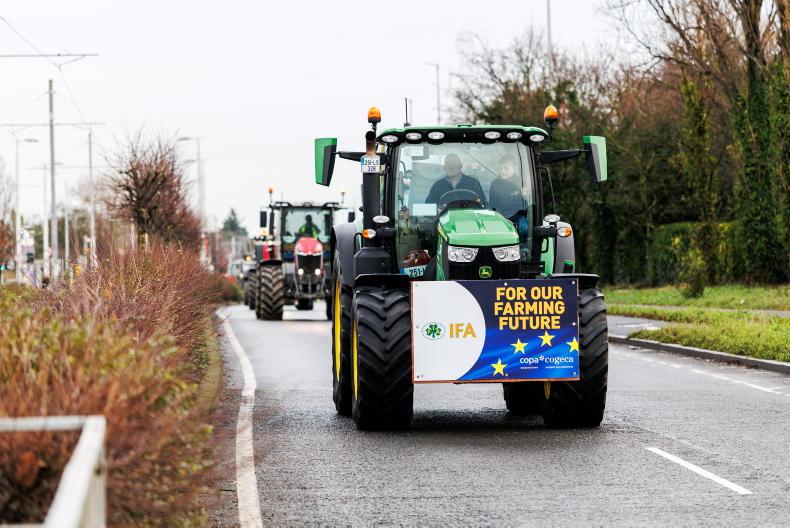

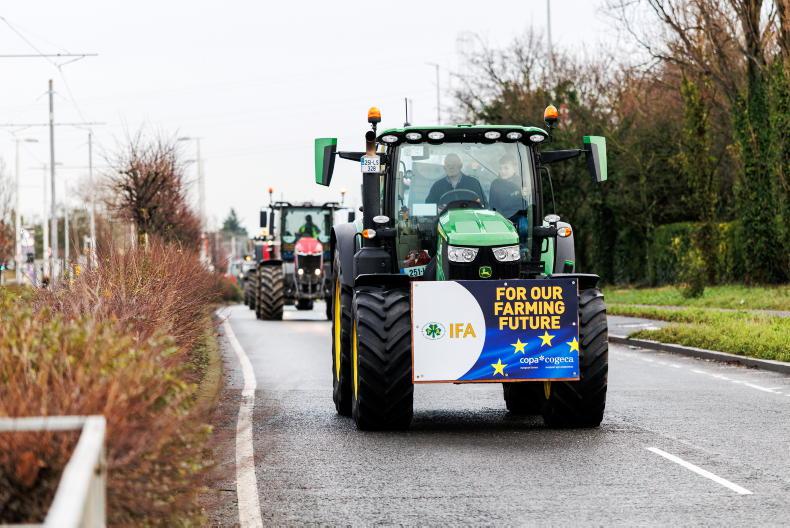

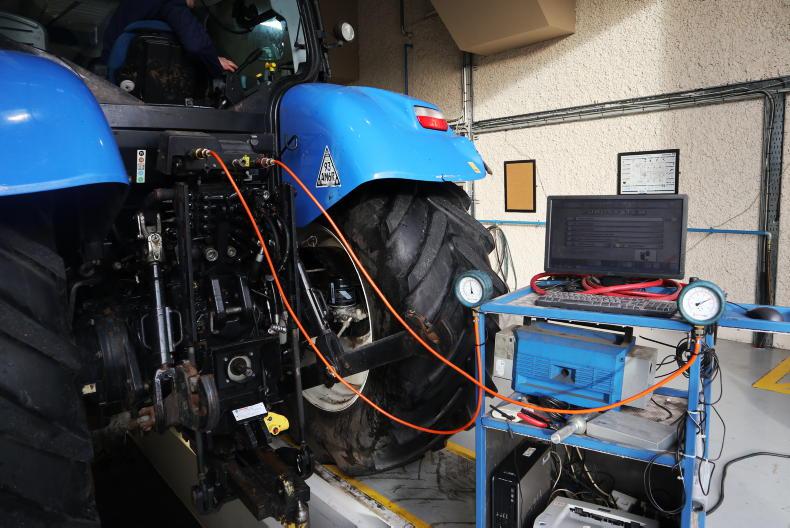
SHARING OPTIONS